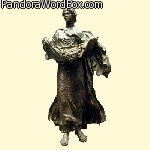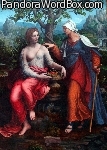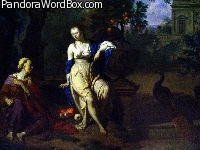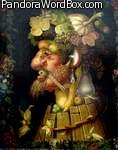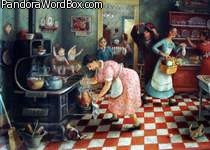Our websites offer information mostly for educational purposes with no intent to alter health care protocols nor to serve as a sole source of medical information.
Always seek the advice of your local health care provider.
|
× UKRAINIAN CHILDREN WITH DISABILITIES HAVE SPECIAL NEEDS |
HALLOWEEN PUMPKIN (B)
Allhallow Hollow Hallow Holy Hall Hell Bonfire Bonefire
Samain Samhein Day of all Souls' or Saints
Pomona Lemur Lemuria Lares Larva Helg Helga
(preceded by part A)
(followed by Thanksgiving)
HALLOWEEN and POMONA represent modern and ancient festivities celebrating harvests and remembrance of departed parents and other sipirits. Halloween has acquired strong roots in the U.S., where the PUMPKIN has became its strong emblem pointing to the aproaching feast of THANSKIGING. The scope of ideas inherent in HALLOWEEN point toward HOLE, HOUSE, HALL, HALL, HOLLOW and even HUSBAND.
(followed by Thanksgiving)
HALLOWEEN and POMONA represent modern and ancient festivities celebrating harvests and remembrance of departed parents and other sipirits. Halloween has acquired strong roots in the U.S., where the PUMPKIN has became its strong emblem pointing to the aproaching feast of THANSKIGING. The scope of ideas inherent in HALLOWEEN point toward HOLE, HOUSE, HALL, HALL, HOLLOW and even HUSBAND.
In Rome, on the last day of October, tributes were made to POMONA, the goddess of fruits and orchards. Others add that perhaps Halloween may be linked with LEMURIA festivities that started May 9th and lasted several days. LEMURES or spirits (specters of dead soles) and the Romans loved stories about how they returned from the lower world (Hades or what Christians call HELL) to the upper world (which probably is more hellish that hell itself). LEMURS were subdivided into LARES and LARVAE, the first being good and the second being malicious souls. LARES belonged among the PENATES or household gods of private family dwellings. It is true that LARES and PENATES often are given as nearly synonymous. But "lar" and "pena" evolved into distinct meanings as illustrated in Spanish: "lar" is lair,"domus" is domicile and "pena" points towar a "penetrating" "penalty" or pain. Regarding LARVAE, medical parlance stresses their habitat or domicile in rotting flesh rather than the broader meaning of a moving, growing, and mutating organism undergoing a metamorphosis as caterpillars do.
In Roman Britain , the Celtic New Year or SAMHAIN was celebrated during the same day as Roman Pomona, but in 61 AD authorities banished SAMEIN apparently to prevent human immolations. Later, the Roman Church renamed the festivity as "All Souls or Saints Day". This Christian penchant to obliterate "paganism" came along with a penchant for violent superstitions such as the belief that black cats were witches incarnate which gave rise to epidemic campaigns of killing innocent cats (most prevalent in northern Europe where the impact of Luther and Calvin were strongest).
SAMHAIN, from the Sanskrit "SAMA" points to SUMMER and SEASON, one of several signs linking SAMHAIN with harvests and remembrance of departed ancestral spirits. The human animal feels the need to "save" the "remains" of relatives, probably the main reason why HALLOWEEN elements are found in so many civilizations. In Ukrainian, words like "khoronyty", or "khovaty", reflect the human penchant to "save, cherish and bury" the remains and memories of the departed. Incineration and interment are the most popular form of "burial" but burning human remains or bones as per BONE-FIRE (bonfire) is an ancient ceremony. In Ukrainian, "bone" is kost and "kostior" implies "bone fire" as does bonfire. Also, "kostel" may refer to "church", where repositories of human bones are common. Bonfire nights in Ireland coincide with Shamhain festivities, but bonfires also take place in other seasons. In southern Louisiana (Cajun country), on Christmas or Papa Noel or Santa Clausa Eve, a "Cajun canoe" is "pulled by eight alligators" along the Mississippi River levees as wood pyres are ceremoniously lit. In Europe, the summer soltstice is also an occasion for bone-fires. In Japan, the Buddhist holiday BON, O-BON or OBON is a feast to honor ancestral deceased spirits. It is also called the "FEAST OF LANTERNS" and the tradition is traced to BON ODORI, a disciple of BUDDHA.
One of the newest symbols of Halloween is the pumpkin, a word of complex implications and derivation. It is worth noting that pumpkin, corn, potatoes, and beans are indigenous plants of the New World. In South America, these plants provide the main ingredients for LOCRO, a delicious popular vegetable stew cooked within a hollowed pumpkin gourd.
One of the newest symbols of Halloween is the pumpkin, a word of complex implications and derivation. It is worth noting that pumpkin, corn, potatoes, and beans are indigenous plants of the New World. In South America, these plants provide the main ingredients for LOCRO, a delicious popular vegetable stew cooked within a hollowed pumpkin gourd.
Bon and Halloween festivities are also strongly similar to the "DIA de los MUERTOS" holiday in Mexico. Dating thousands of years, and with roots in the Aztec festival dedicated to the goddess MICTECACIHUARTL or "LADY of the DEAD" - the perduring impact of this festival on the popular imagination is evident to this day. As in Mexico, Japan, Ukraine and many other countries, families gather at their ancestors grave sites to bring flowers, share "ffrendas" (sacred offers or sacrifices) and to light candles at times of the year when traditions hold that it is easiest for the departed to speak with the living.
20041109, 20180610, ww





